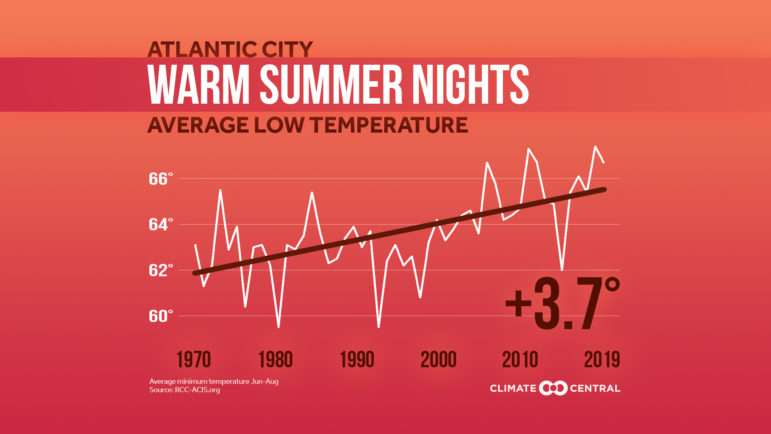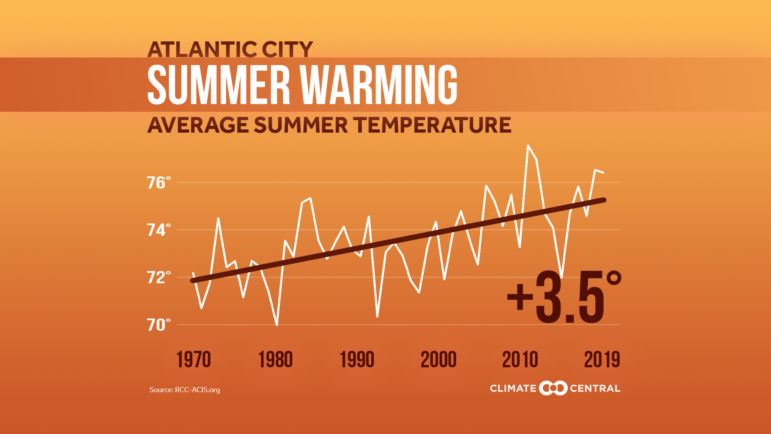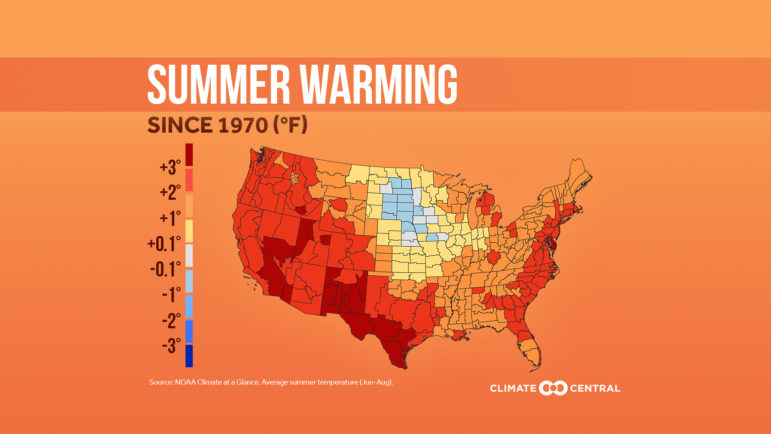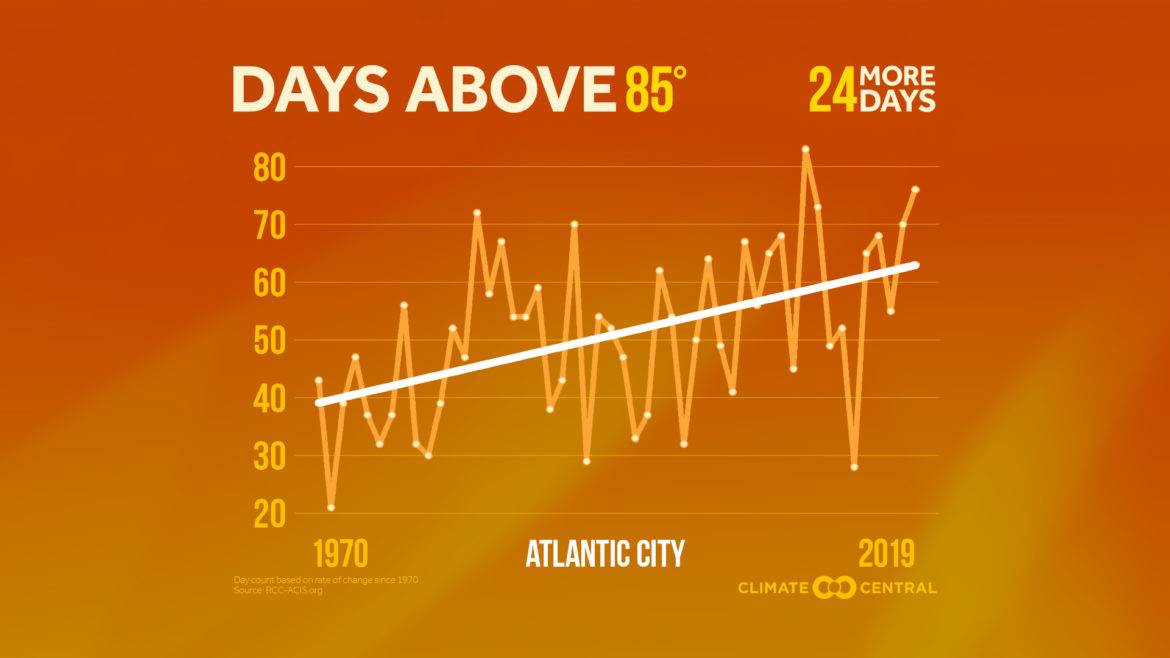It’s not your imagination. Atlantic City is recording more hot summer days now than fifty years ago. There are, on average, 24 more days a year when the temperature in Atlantic City reaches 85 degrees or higher, compared to the 1970s, Climate Central reported on Wednesday. Summer temperatures are rising and, as more people are socializing outside this year, or unable to take refuge in air conditioned libraries, offices or schools, we’re all noticing it.
The Climate Central report comes as the National Weather Service again announces a heat advisory through 8pm on Wednesday, warning, “The combination of hot temperatures and high humidity levels will create the potential for heat related health issues.” Heat kills more people than floods or rip tides, according to National Weather Service data for the last decade. This summer’s high temperatures and humidity are putting more pressure on public health systems already stretched by the COVID-19 pandemic.
It is not just that the temperature is higher, more often, during the day. Summer nights are now warmer in the city by almost 4 degrees. Partly this reflects Atlantic City’s urban landscape: concrete cools down slowly. That is something that could be addressed by adding green spaces and improving the energy efficiency of buildings.

“Summer heat can also contribute to stagnant air which traps harmful pollutants and leads to worsening air quality,” Climate Central reported.

Atlantic City is not an anomaly, of course. Temperatures are rising around the globe. The National Oceanic And Atmospheric Administration said in May that it is “virtually certain that 2020 will be a top 10 year” for global temperatures.

For more on rising summer temperatures, see Climate Central’s reports here. The data Climate Central used for the top graphic was gathered via the Applied Climate Information System. To select the primary temperature threshold for each city, Climate Central defined an “extremely hot day” as the highest 5 degree increment temperature that occurred on at least four days in more than half the years of the study period (1970-2019). Change in the number of days is based on linear regression, the researchers wrote.
If you are having problems paying your energy bills, visit New Jersey SHARES. State energy providers are working with customers who have been recently furloughed or unemployed.
